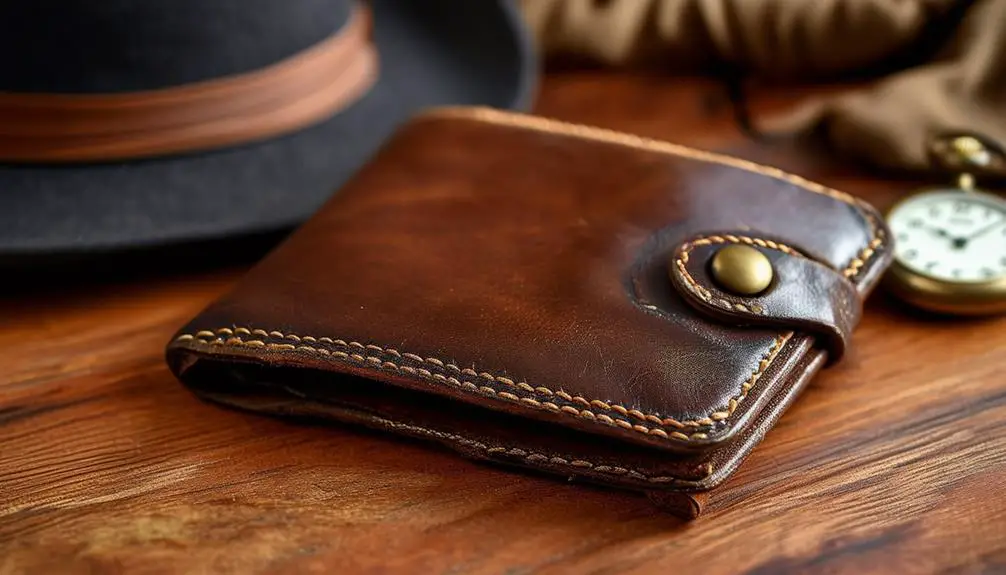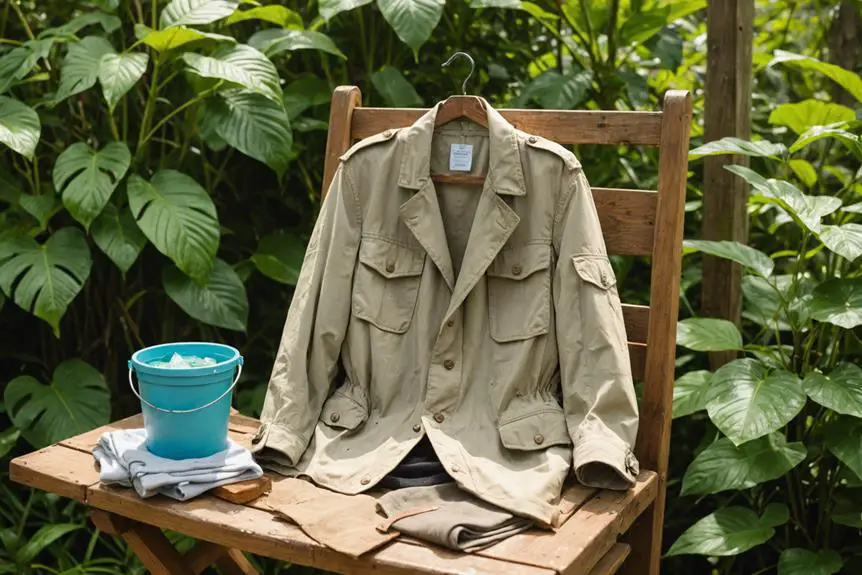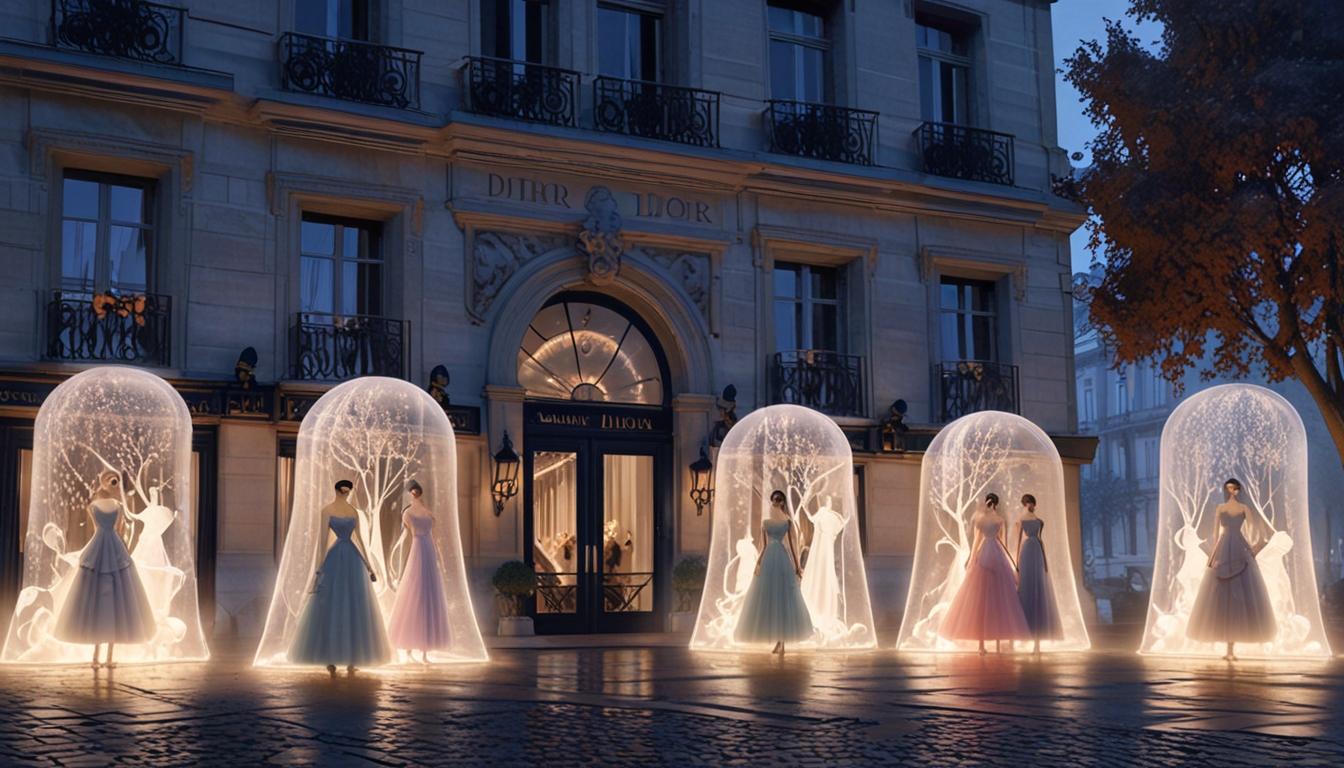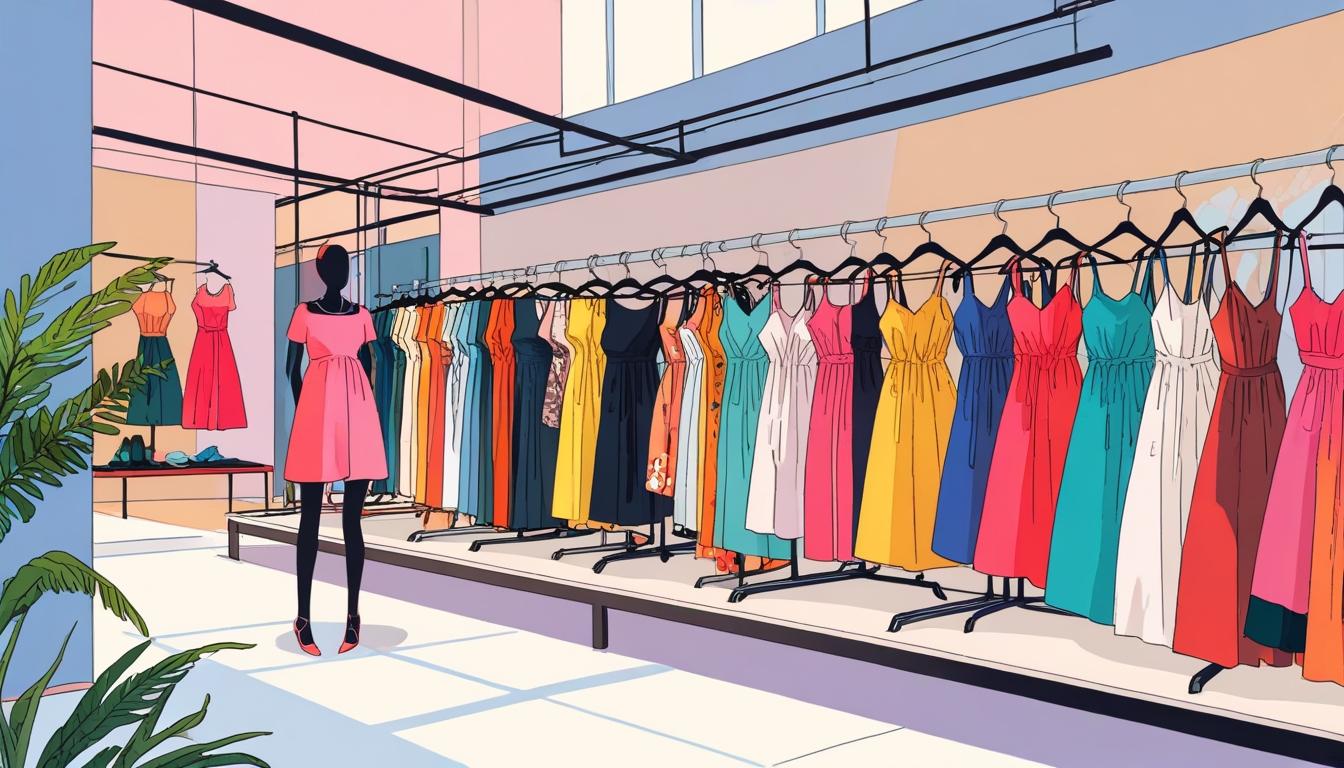In the 1930s, men's leather wallets became symbols of both craftsmanship and practicality, reflecting the resilience of the era. Crafted from durable materials like cowhide and pigskin, these bifold wallets featured exquisite hand-tooled designs and rich color variations. Personalization emerged, with monogramming adding individual flair. The Great Depression influenced wallet designs, shifting focus from luxury to functionality while still showcasing artistry. Styles like front pocket wallets and kiss lock coin purses became popular for their convenience and character. If you're curious about the intricate details and trends of these timeless accessories, there's much more to explore.
Historical Overview of Wallets
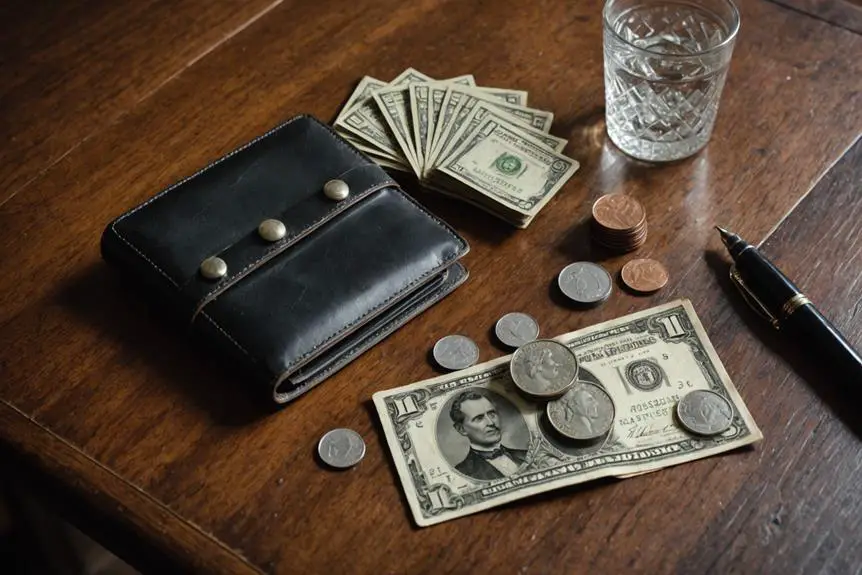
As you explore the history of wallets, you'll discover that the 1930s marked a significant evolution in men's leather wallet design. This era introduced the bifold wallet in vintage styles, where craftsmanship took center stage. Crafted mainly from genuine leather materials like cowhide and pigskin, these wallets emphasized durability while still being stylish.
Hand-tooled artistry became a hallmark of the decade, with intricate designs and monogramming gaining traction among consumers who sought personalization. You'd find practical features such as snap closures and organized compartments for coins, cards, and cash, catering to the increasing demand for functionality.
These wallets were more than just accessories; they reflected cultural influences, showcasing motifs inspired by Native American artistry, which added a unique flair. Vintage leather wallets from the 1930s are treasured today, often regarded as collectibles that retain or even increase in value over time due to their historical significance and quality construction.
Owning a 1930s wallet isn't just about utility; it's about connecting with a rich legacy of design and craftsmanship that continues to influence modern styles.
Popular Materials Used
The 1930s brought a remarkable focus on materials that defined the era's leather wallets. During this time, genuine leather took center stage, with cowhide and pigskin becoming the go-to choices for durability and timeless style. You'd notice the rich leather color variations, from deep browns to sleek blacks, adding character to each piece.
Craftsmanship was paramount, as many wallets showcased hand-tooled designs that highlighted intricate details and artistry. This attention to detail not only elevated the wallet's aesthetic but also demonstrated the value placed on quality. Inside, silk linings offered a touch of elegance, making every wallet feel luxurious against the LEATHER money it held.
Functionality also played a role in material choices, with some wallets featuring kiss lock closures that combined practicality with vintage charm. Personalization emerged as a trend, with monogrammed and themed designs allowing men to express their individuality. The use of these materials and details didn't just serve a purpose; they transformed leather wallets into stylish statements, reflecting the personality and sophistication of the man carrying them.
Common Wallet Styles
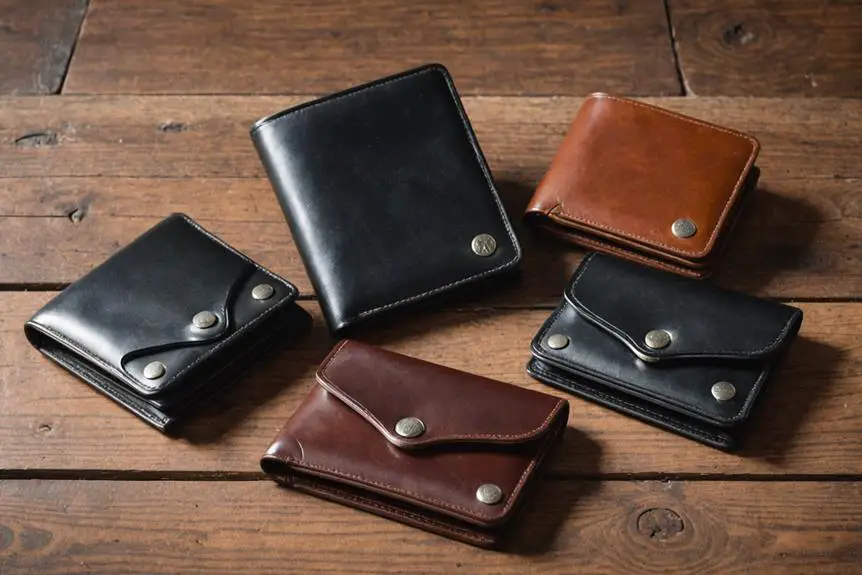
Exploring the common wallet styles of the 1930s reveals a blend of functionality and sophistication that defined men's accessories during this era. The bifold design was particularly popular, allowing you to access cash and cards easily while maintaining a slim profile. Handcrafted from genuine leather, wallets often featured durable materials like cowhide and pigskin, ensuring longevity.
Many wallets included unique details that personalized their appeal. Hand-tooling and monogrammed initials became fashionable, adding a touch of individuality. Additionally, kiss lock coin purses were frequently integrated, providing secure storage for loose change and small items. The intricate silk linings and snap closures showcased the craftsmanship of the time, marrying utility with elegance.
Here's a quick overview of some common wallet styles from the 1930s:
| Style Type | Features | Ideal For |
|---|---|---|
| Bifold | Slim profile, easy access | Daily use |
| Front Pocket | Compact, fits comfortably | Minimalists |
| Card Case | Holds cards securely | Business events |
| Kiss Lock | Secure for coins and small items | Everyday carry |
These styles reflect the era's emphasis on quality and personal expression in men's fashion.
Design Features of the Era
Elegance and craftsmanship define the design features of men's leather wallets in the 1930s. These wallets weren't just functional; they were a statement of style and status. You'd find exquisite hand-tooled designs that showcased impressive artistry, crafted from durable materials like genuine leather, cowhide, and pigskin. Each wallet radiated luxury, reflecting the meticulous attention to detail that defined the era.
Here are three standout design elements that truly captured the spirit of the time:
- Silk lining: This luxurious touch not only elevated the wallet's aesthetic but also provided a soft, refined experience every time you opened it.
- Snap closures and kiss lock mechanisms: These features combined functionality with elegance, ensuring your valuables were secure while still looking sophisticated.
- Monogrammed options: Personalization added a unique flair, allowing you to showcase your individuality and sophistication.
Additionally, themed designs inspired by Native American artistry brought a distinct character to these wallets, blending cultural influences with timeless style. In a world craving elegance, these wallets were the perfect accessory for the discerning gentleman.
Price Ranges and Affordability
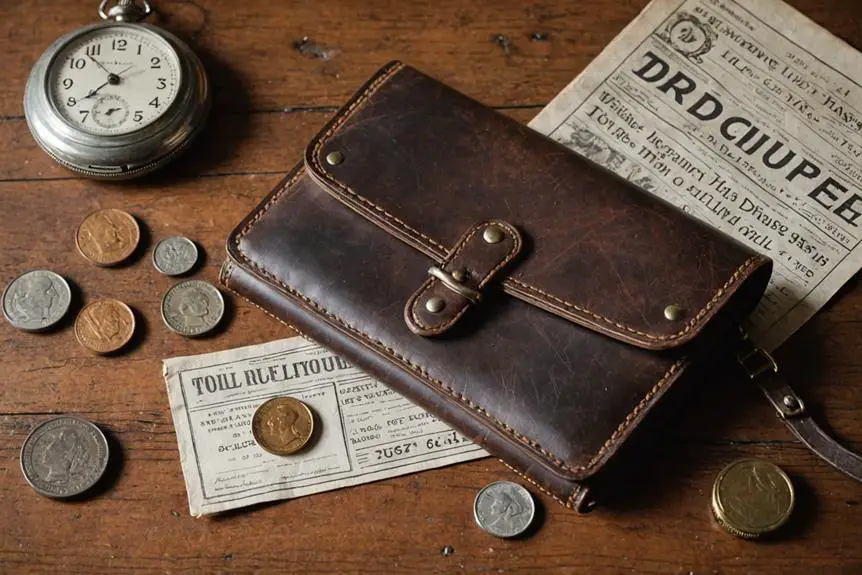
During the 1930s, men's leather wallets offered a range of prices that catered to various budgets, making them accessible for many. Typical prices ranged from around $21.00 to $200.00, reflecting the exquisite craftsmanship and high-quality materials used in their creation. For those on a tighter budget, more economical options like coin purses started at approximately $9.00, ensuring that even the working class could sport a stylish leather accessory.
The allure of vintage wallets during this era stemmed from their unique designs, including hand-tooled and monogrammed styles that added a personal touch. These features not only elevated their aesthetic but also contributed to their desirability among collectors today. Genuine leather, cowhide, and pigskin were commonly used, with the type of material notably impacting the wallet's price and durability.
As time has shown, many of these vintage wallets have become collectibles, often retaining or even increasing in value due to their historical importance and rarity. Whether you invested in a premium piece or opted for a more affordable option, the leather wallet of the 1930s was a reflection of personal style and craftsmanship, appealing to a wide audience.
Influence of the Great Depression
The Great Depression cast a long shadow over consumer habits in the 1930s, shifting priorities from luxury to necessity. With wallets once seen as a symbol of status, many found themselves re-evaluating what they truly needed. As financial hardships took hold, leather wallet manufacturers pivoted towards affordability, crafting designs that met the demands of a struggling populace.
You might notice a few key trends during this turbulent time:
- Simplicity Reigned: Functional designs emerged as people sought practicality; ornate embellishments became a thing of the past.
- Materials Changed: Cowhide and pigskin replaced high-end leathers, offering a more budget-friendly option without sacrificing durability.
- Craftsmanship Shone Through: Even in hardship, unique designs in bifolds and coin purses showcased the artistry of the era, proving that quality can endure.
The wallets of the 1930s reflect resilience and adaptation, embodying a shift where necessity trumped luxury. While the times were tough, the creativity and craftsmanship endured, transforming wallets into more than just accessories—they became symbols of survival and practicality.
Cultural Significance of Leather Wallets
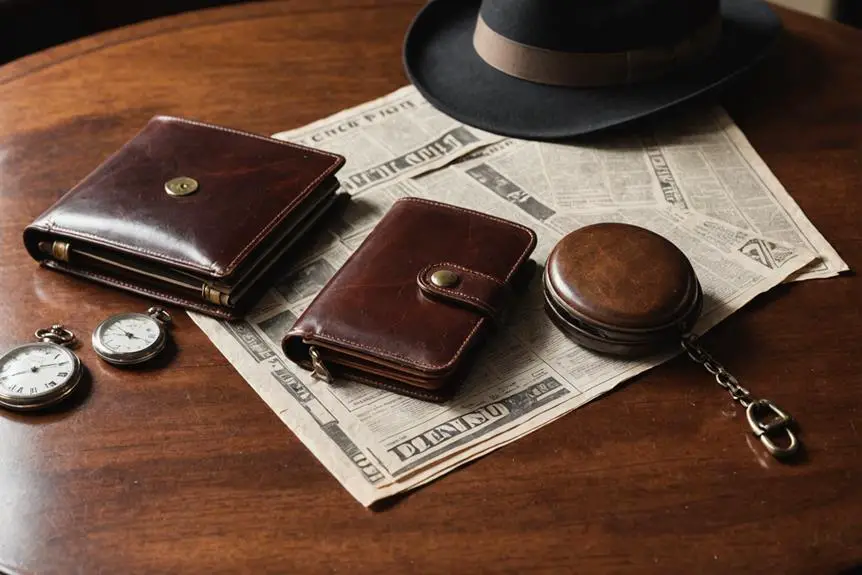
Leather wallets in the 1930s weren't just practical accessories; they were statements of identity and resilience. These wallets showcased your personality and social standing during a time when every detail mattered. The craftsmanship was remarkable, with many featuring hand-tooled designs that reflected the artistry of the era.
| Characteristic | Significance |
|---|---|
| Hand-tooled Designs | Showcased individual artistry |
| Genuine Leather | Symbolized luxury and durability |
| Cultural Influences | Merged different aesthetics |
These wallets often included personalized touches like monograms or themed motifs, emphasizing individuality. The use of materials like cowhide and pigskin highlighted not just durability but a luxury status, making them symbols of success amid the Great Depression's struggles. They served more than storage; they communicated your style and attention to detail, aligning with traditional masculinity ideals.
Today, vintage leather wallets from this era still captivate collectors, revealing a lasting appreciation for the cultural contributions they made to men's accessories. By owning one, you connect to a rich history, embodying the resilience and artistry that defined a challenging yet transformative period in fashion.
Care and Maintenance Tips
To preserve the timeless elegance of your vintage leather wallet, regular care is vital. This small yet significant accessory deserves the best treatment to maintain its charm and functionality. Follow these care tips to keep your wallet looking exquisite:
- Clean Regularly: Use a soft, damp cloth to wipe away dust and grime. This simple step prevents buildup that could damage the leather over time, keeping it pristine.
- Condition Periodically: Every few months, apply a calendula-based cream or specialized leather conditioner. This keeps the leather supple and enhances its natural shine, guaranteeing it feels as good as it looks.
- Store Properly: Always keep your wallet in a cool, dry place, away from direct sunlight. This protects it from fading and cracking, allowing it to retain its vintage appeal.
Additionally, if your wallet gets wet, gently blot it and let it air dry at room temperature. For scratches or minor scuffs, a matching leather polish can restore its original color. With these simple maintenance steps, you can guarantee your vintage wallet remains a cherished piece for years to come.
Collectibility and Vintage Appeal
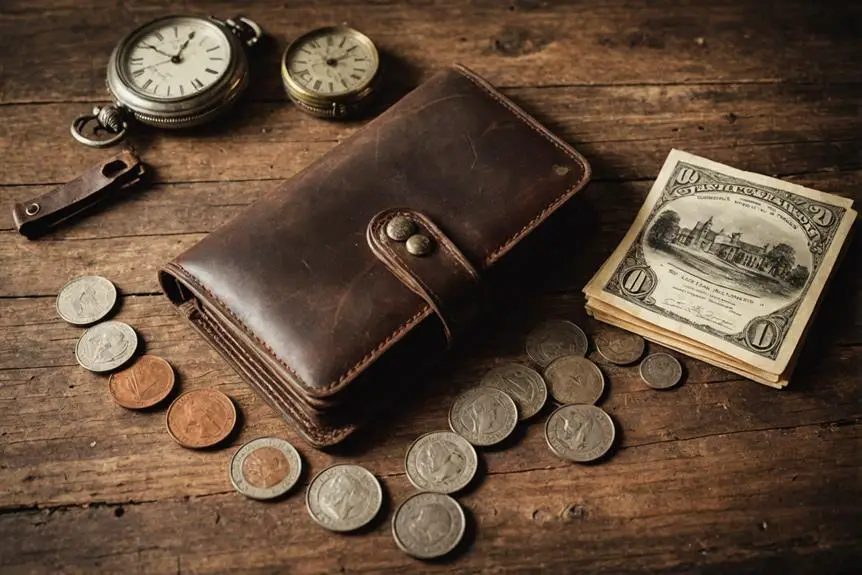
Embodying a blend of craftsmanship and style, men's leather wallets from the 1930s have become highly sought after collectibles. Their allure lies not just in the materials—genuine cowhide and pigskin—but also in their unique features, like silk linings and kiss locks. Vintage enthusiasts are drawn to hand-tooled and monogrammed designs, which tell a story of personal expression and artistry.
The rarity of certain wallets, especially those showcasing Native American artistry or cultural significance, drives market demand. Collectors appreciate these pieces not just for their aesthetic charm but also as historical artifacts that often retain or even increase in value over time.
Here's a quick look at factors influencing their collectibility:
| Feature | Appeal | Value Impact |
|---|---|---|
| Hand-tooled Designs | Unique craftsmanship | High demand among collectors |
| Cultural Significance | Storytelling through art | Increased market value |
| Authentic Materials | Genuine leather quality | Enhanced desirability |
| Unique Features | Silk linings, snap closures, kiss locks | Reflects era's fashion trends |
| Rarity | Limited availability of certain designs | Major factor in valuation |
These wallets are treasures, enriching any collection with a touch of history.
Frequently Asked Questions
When Did Men Start Carrying Wallets?
Men started carrying wallets in the late 19th century, as urbanization increased. You'll notice how these accessories evolved, blending practicality with style, becoming essential for organizing cash and personal items while showcasing individual fashion choices.
Did People Carry Wallets in the 1800s?
In the 1800s, you wouldn't find many people carrying wallets. Instead, they relied on pockets for coins and small items. Wallets began evolving later, transforming from simple pouches into more structured designs by century's end.
Why Is It Called a Wallet?
It's called a wallet because it originates from the Old English "walletta," meaning a small pouch. This reflects its purpose: a practical accessory designed to carry money and personal items, combining functionality with style.
Is a Wallet an Accessory?
Yes, a wallet's definitely an accessory. It elevates your style while serving a practical purpose. With unique designs and materials, it reflects your personality and status, making it an essential part of your fashionable ensemble.
